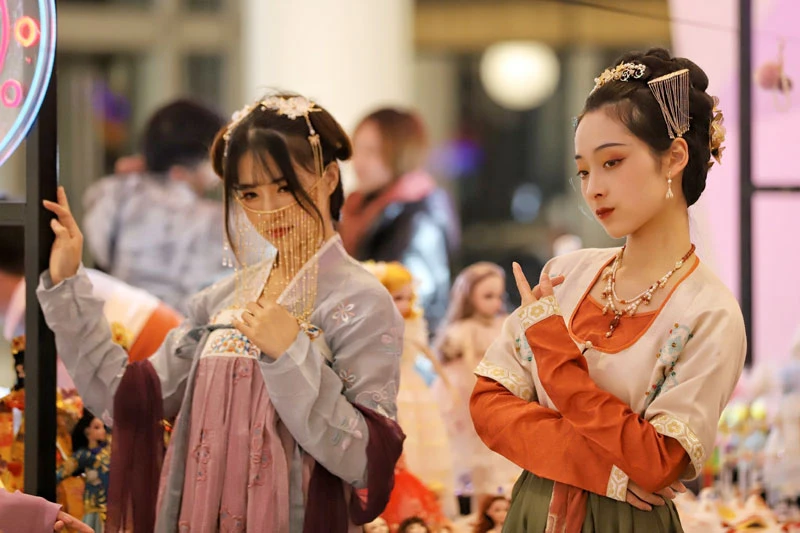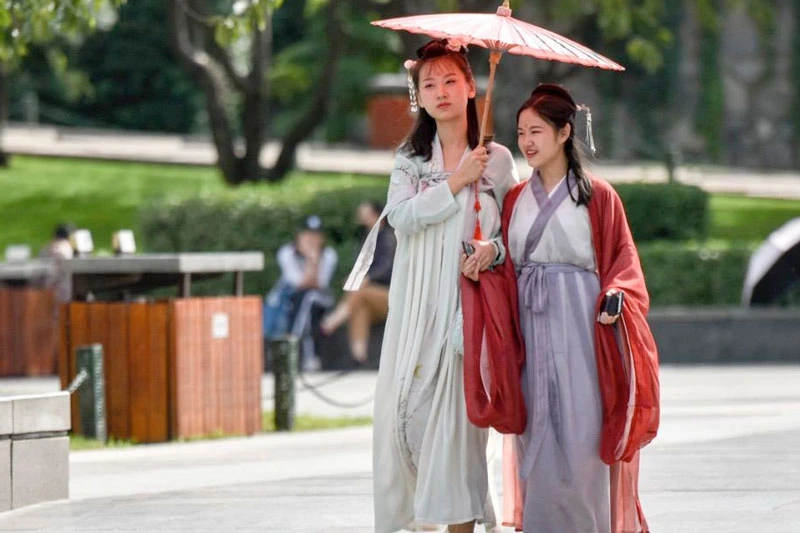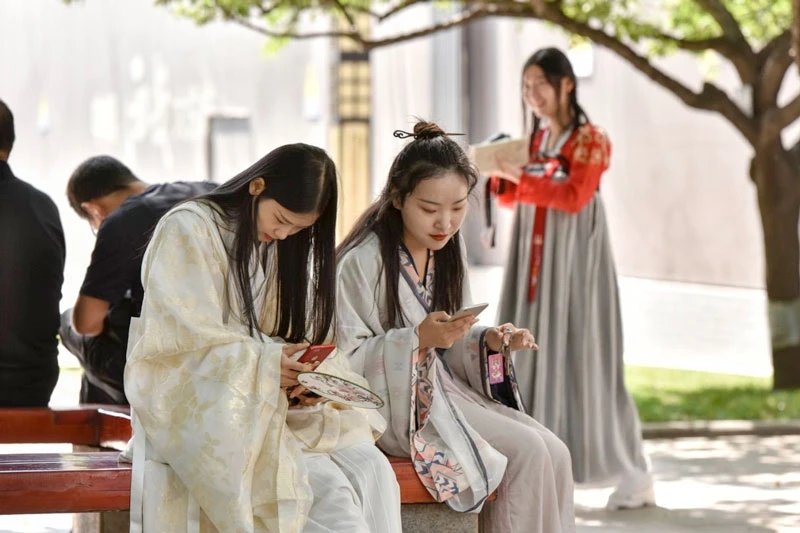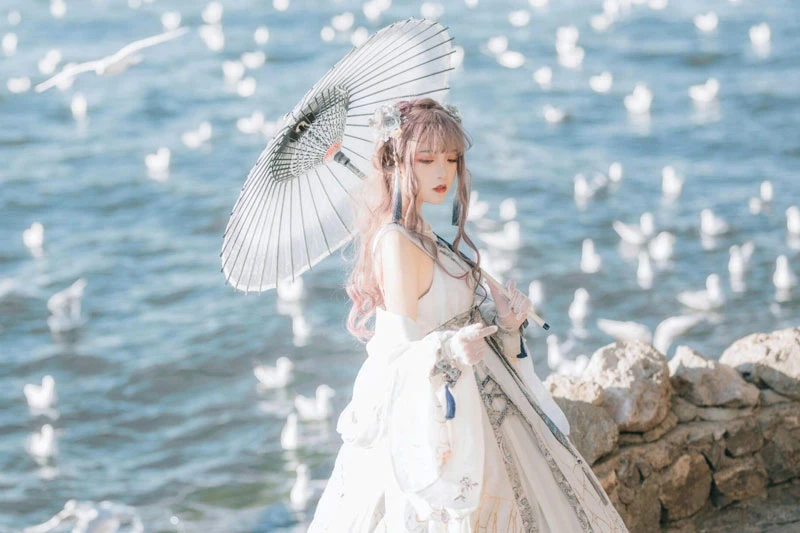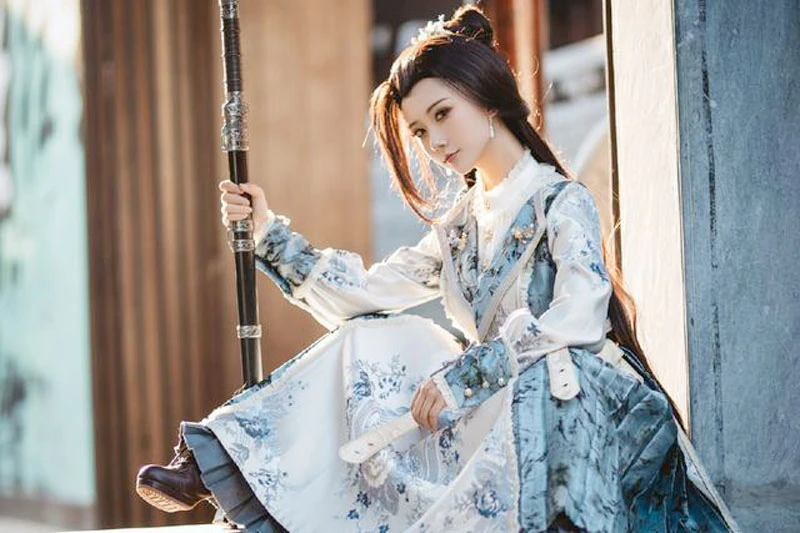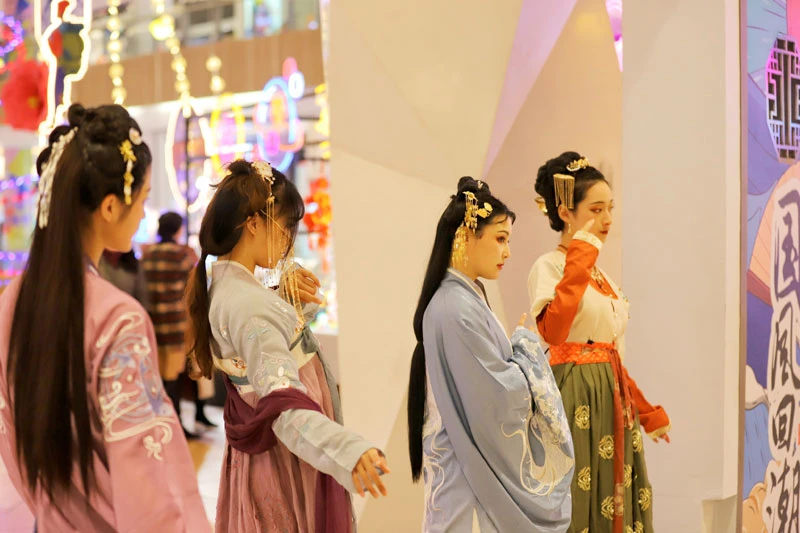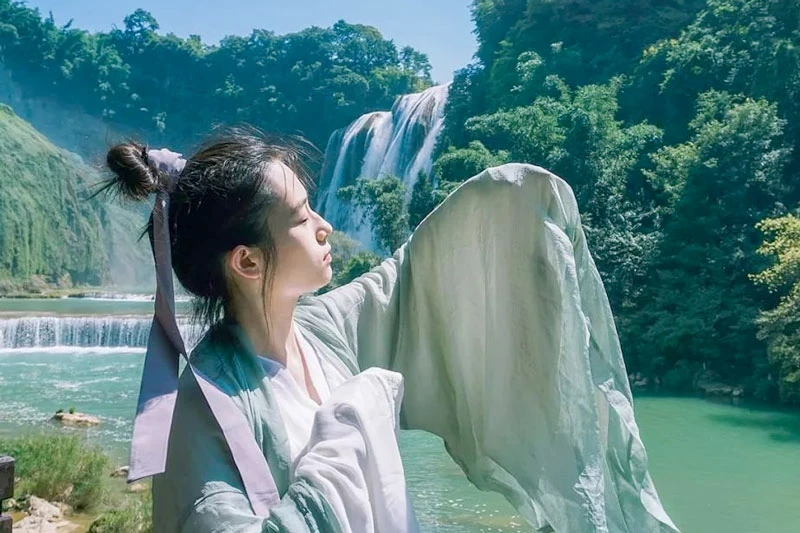Chengdu – China’s First Hanfu City
Hanfu culture has become a new fad among many Chinese young people in previous years, with events including Hanfu parades, Hanfu dances, Hanfu fashion displays, and so on. The Tianfu Culture Theme Forum, Chengdu Fashion Week, and Chengdu Hanfu Culture Festival have all had a big influence historically.
Various Hanfu performances representing important historical personalities, such as Hanfu of the Tang Dynasty – Qixiong Ruqun, Beizi Hanfu of the Song Dynasty, Jiaoling Ruqun of the Jin Dynasty, and others, were presented in turn at the Hanfu Culture Festival. Everyone present was dressed up in their favorite Hanfu clothing. Walking along this street, it appears as if one is transcending time and distance, and it also reflects the beauty of Chengdu’s original city, Hanfu.
Why did Chengdu become the home of China’s first Hanfu based on the cultural streets?
Since ancient times, Chengdu has been known as the “Land of Silkworm Clusters.” The Sichuan brocade in Chengdu is one of China’s “four famous brocades,” with a 2000-year history. It’s a vibrant brocade with Han national traits and a distinctive local style.
Chengdu and Hanfu have a lengthy history, as can be easily observed. Chengdu, as the culmination of “Hanfu’s first city,” has a long and illustrious history. In Chengdu, greater and greater numbers of young people are wearing Hanfu, which can be strongly attributed to the current popularity of short movies.
Hanfu’s success has resulted in an upgrade of the neighboring industry value chain. The “Chengdu silver flower silk-making technology,” for example, is considered a major unique heritage treasure.
This has now been blended with Hanfu culture to produce various Han decorating businesses that include silver blossom silk technology, giving the intangible cultural legacy a new lease of life. The Hanfu industry’s growth resulted in the creation of new jobs such as the Hanfu model, Hanfu stylist, and so on.
Chengdu is recognized as the very first city of Hanfu, owing to the high purchasing power of the Chengdu Hanfu populace and their presence among several founding Chengdu merchants. Chengdu, on the other hand, has a vast history and culture and has done an excellent job of preserving and transmitting it.
According to a knowledgeable source, Manjusri Square will be exhibited to the world before the 2022 World University Games as a significant project of Chengdu’s “Tianfu Jincheng” to promote “Chinese civilization and Tianfu culture.” Time to throw on your favorite Hanfu next spring and visit China’s first Hanfu cultural street.
Fashion Hanfu and Lolita Style Blended Perfectly
Hanfu is a Chinese traditional cultural costume. The overall design is solemn, atmospheric, elegant, and adaptable, reflecting the gentle and peaceful, elegant and distant, and tranquil national character of the Han people.
The rise of Lolita-style clothes in Japan has resulted in the formation of a clothing style. Mostly from the Victorian era of European women’s clothing, with Gothic, punk, and other aspects are thrown in for good measure. Lace, lace, puffy skirts, bows, ribbons, and so on are examples of these components.
What type of sparks will fly when two entirely distinct forms of clothing culture mix in various ways? Let’s have a look at how Chinese Hanfu and Lolita style apparel collides, and what type of wearing style results.
Clothing pieces are incorporated
Lolita’s Chinese style is practiced in China traditional dress culture and is one of Lolita’s creative styles. Lolita’s skirt, for example, is printed with a Chinese-style pattern. Alternatively, we may print Lolita-style designs on Hanfu and Qipao, Chinese traditional clothes. Does this type of creativity make your eyes sparkle? Traditional Hanfu has always been on the cutting edge of technology. Many Hanfu has now experimented with lace, chiffon, and other non-traditional textiles. The classic Hanfu with lace cloud shoulder, for example, is a Lolita style.
Alternatively, slightly alter the design of the classic Hanfu and incorporate Lolita traits, so that the original exquisite skirt is puffed up and the sleeves and ornaments are adjusted properly. This Chinese princess is invigorating! Style mix and match: Although the main body of the Hanfu Tops with JSK is Lolita, the Chinese collar around the neck gently expresses the taste of Chinese style. Alternatively, pair Hanfu QiYao Ruqun with a Lolita top. The fusion of Chinese and Western styles is flawless.
Hanfu Accessory Incorporation
In addition to the fusion of the two forms of clothing design, we may employ accessories to fuse the two styles of clothing design.
Instead of the usual headpiece hairpin and comb, a Lolita-style hairband, flat hat, or bonnet should be worn with Hanfu. Then the overall appearance shifts. Hanfu’s headgear has flower bobby pins made of diverse materials, and Lolita’s headdress has flower balls.
Hairstyle and make-up
The Lolita skirt with the gorgeous Chinese haircut will take your breath away. The form is made more vibrant by the graceful and tranquil Hanfu with Lolita style haircut. The straw hat, which is quite prevalent in Lolita’s modeling, gives the outfit a fresh, pastoral feel. A cinnabar mole between the brows and the corner of the eye is ideal for a Chinese Lolita Dress in terms of make-up.
What’s the Best Way to Clean and Store Hanfu?
Hanfu has a fairy-like appearance and a distinct feeling when worn, thus there are many various styles and materials to choose from. Do you know how to care for your hanfu? The cleaning of hanfu and the storing of hanfu are the two primary elements of hanfu upkeep.
- First and foremost, let’s discuss hanfu cleansing. Hanfu is different from regular clothing in that it is a whole outfit, and the skirt and sleeves are long and broad, making washing difficult. There’s also the matter of deciding how to clean the hanfu based on its various parts, which may be done in one of several ways.
- The correct way to clean a hanfu is to turn it over and wash it by hand as often as possible. To protect the hanfu from wear and tear, use a laundry bag if you use a washing machine.
- The second thing to remember is that hanfu of different colors should not be cleaned together since cross-staining will occur, and dark and light hanfu should be washed separately. If you have black hanfu that is prone to discoloration, soak it for a few minutes in warm salt water to avoid it.
- The first time you wash a cotton fabric, it will shrink. You can soak it for a brief time before washing it, but not for too long since the color will fade otherwise.
- Because hemp fiber fabric is often stiff, it is advisable to use a delicate technique while washing it, rather than vigorous rubbing, to prevent causing the fabric hair to stick to the surface.
- Last but not least, do not expose the hanfu to direct sunlight, since this will cause a portion of the hanfu to fade. When drying your hanfu, pick a well-ventilated, cool location and flip it over frequently to prevent direct UV radiation, which will age the hanfu.
How to store hanfu
Firstly, Hanfu storage should be integrated into your personal living space; strive to keep your closet dry. If the weather becomes more humid, you must be prepared to repel insects.
- Varied styles of hanfu should be preserved separately based on the different textiles. Fabrics that are easy to wrinkle and shrink, such as silk, cotton, linen, and wool, should be hung in the closet so that hanfu deformation is not a problem. If the fabric is chiffon or another fabric that does not wrinkle or shrink easily, fold it and put it in a dust bag in the closet.
- Longer hanfu should be hung in the closet, while shorter hanfu can be folded immediately in the closet. However, if the weather permits, it is preferable to hang in the closet from time to time for ventilation.
- Mamian Qun or Zhequn can be stored by hanging it in the closet and using a clip to hold the skirt head in place to preserve the pleats in form. If you don’t wear it often, fold it according to the pleats to make it easier to put on the next time.
Two Hanfu Ironing Tips
Because this fabric is a non-chemical synthetic natural material, it requires greater effort to iron.
1. Silk
Silk hanfu is less wrinkle-resistant than cotton hanfu and hence requires ironing to be straight and elegant.
Choose a broad, level location for the ironing table to keep garments semi-dry while ironing (or use a spray can to uniformly wet clothes before ironing), set to low-temperature ironing (or “silk” file) ironing. Place a layer of white cotton linen on the bottom before ironing.
If you’re using a hanging ironing machine, it’s ideal to use a wooden hanger. While ironing, don’t over-pull the sleeves; instead, gently raise them to avoid deforming the garment. As an outcome, this allows the ironing of underarms, collars, and other parts more convenient.
2. Linen and cotton
Cotton and linen fabrics are more resistant to high heat than silk and synthetic fibers. When ironing, however, it is advisable to iron the inside first to prevent the color from spreading. To minimize friction damage to the garment when ironing the exterior, use white cotton ironing to cushion the fabric. Low-temperature ironing is an option if the iron does not have a cotton and linen file.

